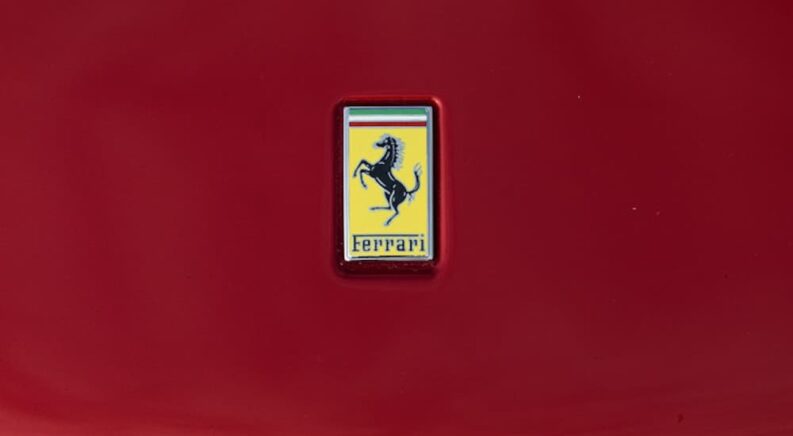It all led up to this. Thirty years of rediscovery, realization, succession and innovation, aggregated into a single package which creates a serious argument for itself as the greatest car on the planet. Seventeen years of meticulous cultivation, of both a collection and a relationship, to be granted the privilege of an opportunity to buy it. A new iteration with higher performance than anything that came before, and simultaneously the forefather of all that will follow.
Today, I’m writing about LaFerrari. Not just any LaFerrari, but specifically chassis #203166. It sold at auction for nearly $2.25 million on November 5, 2022, departing the Gran Turismo Collection to which it’d belonged since it was built in 2014. This collection of 18 awe-inspiring performance cars has me thoroughly entranced and inspired. I hope you enjoy accompanying me on this journey deeper into the world of these legendary automobiles. I also hope you pack lightly. Anything that doesn’t fit into your pockets will have to be left behind because cargo capacity is one thing these cars aren’t known for.
So far, I’ve covered the first four Ferrari hypercars: the 288 GTO, F40, F50, and Enzo. The saga of this exclusive family of vehicles is incredible! The 288 GTO was created from a desire to rediscover Ferrari’s racing and performance heritage, and to remind the world that malaise need not overtake us all. The F40 followed directly from attempting to translate it into a racing program. These two and their oft-overlooked successor, the F50, are renowned designs but did little (if anything) to change the automotive game with technology, the way Porsche and Bugatti did with the 959 and EB110 in the same era. The vehicles exhibited mastery of what was, but not brilliance at leading the world into what could be.
Then Ferrari delivered the Enzo in 2002, using the best performance technology available to create a forward-facing hypercar that remains a benchmark to this day. It represented a paradigm shift that pointed the brand directly towards the eventual pinnacle of automotive performance technology design: LaFerrari.
The Road to the Ultimate Ferrari
For those who don’t know, LaFerrari literally translates from Italian as, “The Ferrari” (hence my deliberate refusal to write “the LaFerrari” at any point in this article). Essentially, the world’s most iconic marque took a step beyond naming its fourth hypercar after its founder and named its fifth after itself. There’s no small amount of pressure or scrutiny applied to a model named “The Ferrari,” but in the time that Maranello spent developing it, they created a car undoubtedly worthy of the title.
By the time the F50’s production had ceased, it was more than clear that Ferrari could prove nothing more about their ability to master the performance automobile game. By pushing the envelope just a little bit further and changing the game with the Enzo, the inception of LaFerrari became possible. The need for the brand to strike out as a leader of innovation was on full display when LaFerrari was introduced in 2013, featuring much more than the most powerful naturally-aspirated V12 they’d ever built. It also introduced the first production hybrid powertrain they’d ever built, along with myriad design decisions that make LaFerrari simultaneously faster and easier to drive than any of its predecessors.
Quintessential Ferrari
As a brand, Ferrari is rooted in motorsports and performance above all else. They’re the team who sells cars on Monday to race on Sunday, and the glory of the hypercar lineage issues from its race-intended origins. Therefore, function comes before form in a Ferrari hypercar, a value upheld in LaFerrari’s design. While its design language is familiar, recalling both the Enzo and legendary race cars of the ‘60s, it is merely the natural result of a focused effort on creating downforce, minimizing drag, maintaining temperature, and maximizing power delivery.
The T-shaped support-and-spoiler structure in the rear and inverted-T front splitter do more than emulate the F1 cars on which its hybrid technology was developed. The low, stout hood, precisely sculptured side scallops, intimidating offset-size wheels, and numerous eye-catching vents all contribute to a stunning, if alien, profile, but none are cosmetic in their purpose.
Then there are the aspects that one doesn’t see, like the carbon fiber monocoque and the use of four different kinds of carbon fiber throughout to optimize the mass and performance characteristics of each component. That effort, led by Roy Byrne, who only designed 11 World Championship-winning Ferrari chassis before this, increased torsional and beam stiffness by more than 22% vs. the Enzo, while also reducing mass by 20%.
Ferrari’s embrace of cutting-edge composites goes way back, but their embrace of advanced electronics isn’t quite so historical. This is where LaFerrari establishes itself as an inflection point, both the ultimate realization of all that came before and the monumental launch point for all that will follow. So much is incorporated that “violates” the analog experience of old, from its incorporation of an electronic differential and traction control, to a Ferrari-first electromechanical steering rack, to magnetic adaptive dampers.
The result is an experience that is completely accessible to drivers who may be unaccustomed to supercars, a confidence that enables owners to get the most out of LaFerrari without risking their lives, and a roadgoing character that may be even better than the track persona. Damper settings that reduce the punishment a driver endures on bumpy roads, steering which is ultra-precise despite being light on feeling, the complete invisibility of the hybrid power systems… It might not be “analog,” but it might be the best driving experience in the world, even today. Carlos Lago, MotorTrend’s LaFerrari reviewer back in 2014, concluded by begging the 499 owners of the new hypercar to drive it for all that it’s worth.
A Glorious Pairing of Past and Future
Let’s not forget the centerpiece of the car, which, like any Ferrari, is the powertrain. The internal combustion engine is the very same 6.3L V12 from the F12 Berlinetta, but tuned to allow a higher redline and to produce more power. That 789 hp at nearly 9000 rpm gave LaFerrari the most powerful naturally-aspirated V12 that Maranello had built, while significantly increasing the intensity of the aural experience. Of course, this tune came at the cost of low-end power, but LaFerrari doesn’t need that from the V12, because it also features an F1-derived hybrid power system called HY-KERS.
HY-KERS manages power delivery to and from the electric motor attached to the transmission, providing instant electric power at the low end, and combining at the high end for a total of 950 hp and 715 lb-ft of torque. It also sustains high engine RPM in corners, delivering excess torque from the motor for regeneration and making the engine’s peak power immediately accessible upon exit. Combined with the active aerodynamics, enabling downforce to vary from 200 lbs to 800 lbs at 125 mph depending on the situation, LaFerrari beat Enzo’s time around Fiorano by five seconds and registers a 0-60 mph time under three seconds.
The proliferation of hybrid and electric powertrains in supercars was practically a foregone conclusion in 2013. In LaFerrari, the brand established the halo from which the next decade of production cars would draw inspiration. By incorporating this technology, along with all of the silent driving assists that mask an individual driver’s mistakes, Ferrari embraced this future and all but ensured the success of lesser cars that inherited the technology. The result was a car that so effectively distilled the essence of the brand into a driving experience, they could only name it after themselves.
Chassis #203166
The formula by which Ferrari identifies the lucky few who will be invited to purchase limited-edition cars is unknown. They will deny they even have a shortlist, but of course they do. It is known that Ferrari encourages prospective first-time owners to buy used and to develop a relationship with their dealer before seriously pursuing a brand new car. It is also known that prospective LaFerrari buyers needed to have at least two “recent” brand-new Ferrari purchases and to have owned six Ferraris within the past decade. The brand is notorious for the way they control their product, and the many steps they take to ensure their customers are personally invested in the brand and the lifestyle of a driving enthusiast before granting them the distinct privilege of buying a million-dollar car from Maranello.
Fortunately for the owner of the Gran Turismo Collection, their history of owning, maintaining, and using notable Ferraris since 1997, along with whatever other voodoo goes into Ferrari’s formula, added up to a special invitation in 2013. By July 2014, chassis #203166 was registered in the UK, and the owner’s Ferrari hypercar quintet was complete, in a beautiful uniform dressing of Rosso Corsa red.
My tour of the Gran Turismo Collection notes a common thread among the hypercar quintet: the owner did anything but mothball their cars. The other four Ferrari hypercars combined for 3,500 miles per year, which isn’t bad for a set of bare-bones “race cars for the road.” For examples like the F50 or Enzo, that kind of usage is right at the upper limit of what you’ll see at auction. Perhaps the excellence of LaFerrari is illustrated, then, by the owner’s average of 3,000 miles a year in this car alone. After learning of LaFerrari’s excellent road manners, and of a straight-piped LaFerrari which was serving as its owner’s daily driver, I really shouldn’t be surprised that this owner of 18 vehicles found the time to put 250 miles per month on this car.
For a sense for how abnormal that is, across 10 LaFerrari auctions dating back to 2019, the total mileage of the cars sold was less than 8,000 miles, a third of what chassis #203166 has experienced. Yes, those cars sold for an average of $3 million, implying a depreciation loss of nearly 30% for driving it so much, but treating cars as investments is exactly the behavior that Ferrari attempts to combat with their exclusive client lists. A Ferrari is meant to be experienced, meant to be driven, and for chassis #203166, a rarity with 50 times the average mileage for the model, its purpose has undoubtedly been realized.
LaFerrari #203166: The Best of the Best
LaFerrari may not be the greatest Ferrari of all time or the best sports car in the world. Its impact on popular culture seems to pale in comparison to its predecessors, and for hardcore purists, its hybrid powertrain surely recalls a bitter taste. Yet within, it presents the absolute best of Ferrari engineering in every respect. Its V12 was the greatest iteration of the powertrain to date. Its construction from four carbon fiber compounds reached new levels of rigidity and lightness. Its steering and suspension made it absurdly precise, wholly capable of using its ridiculous power, and remarkably at home on the road as well as on the track it was designed for. Its use of active aerodynamics and a hybrid powertrain resulted in 5% faster lap times and 50% greater fuel efficiency than its predecessor, and it set an important precedent in the use of electric power for performance. It was everything Ferrari had ever been, and everything they have yet to be.
For chassis #203166, not only has it been as excellent and pivotal as any other LaFerrari, but it’s also seen thousands of miles per year. In an automotive climate where most of its siblings never break in their engines, this car has undergone over $30,000 of service to maintain as it pounded mile after mile of British asphalt. Built by a manufacturer which prizes track performance and a lifestyle built around the passion for driving, #203166 has been living up to its potential like very few supercars have a chance to do. I can only imagine that it’s exactly what Enzo would have wanted.




